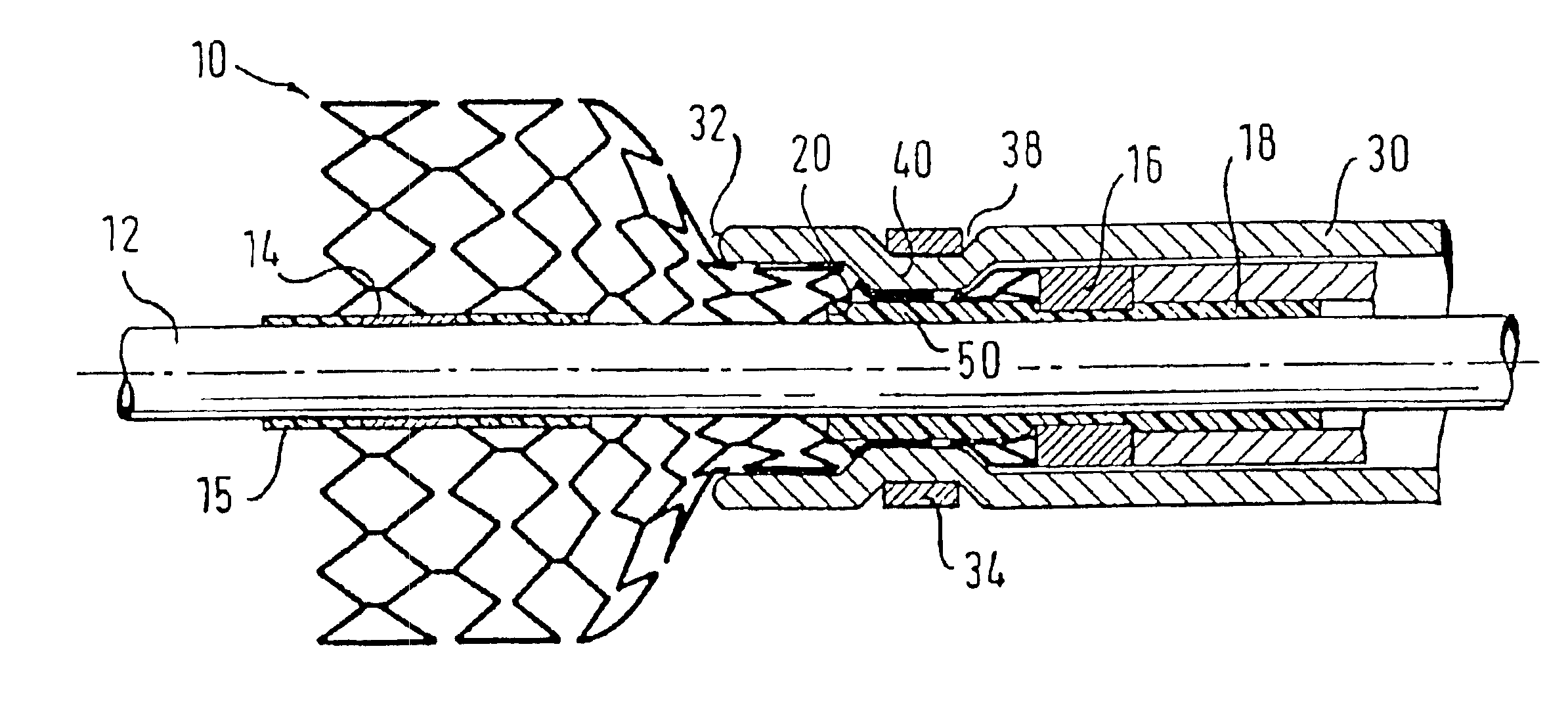Stent delivery system
- Summary
- Abstract
- Description
- Claims
- Application Information
AI Technical Summary
Benefits of technology
Problems solved by technology
Method used
Image
Examples
Embodiment Construction
[0021]FIG. 1 shows a delivery system for a stent 10. The system is based on a tubular catheter tube 12, designed to be advanced along a guidewire (not shown). The catheter tube carries on its cylindrical surface 13 a distal marker 14, retained axially in position on the tube 12 by a short length of polymeric material 15 melted onto the tube 12. A proximal marker band 16 is retained on the tube 12 in a cured annular bed 18 of polymeric adhesive. This adhesive bed extends distally of the marker band 16 as far as a distal end 20 to form a short cylindrical length 21 of the cured adhesive, distal in relation to the marker band 16, with a radially outwardly facing surface 22 and a radially inwardly facing surface 24 bonded to the cylindrical surface of the tube 12. This cylindrical zone, radially between cylindrical surfaces 22 and 24, has a radial thickness T1. Reference is made to the fact that the marker band 16 provides a distal-facing end surface 26 which defines the proximal end of...
PUM
 Login to View More
Login to View More Abstract
Description
Claims
Application Information
 Login to View More
Login to View More - R&D
- Intellectual Property
- Life Sciences
- Materials
- Tech Scout
- Unparalleled Data Quality
- Higher Quality Content
- 60% Fewer Hallucinations
Browse by: Latest US Patents, China's latest patents, Technical Efficacy Thesaurus, Application Domain, Technology Topic, Popular Technical Reports.
© 2025 PatSnap. All rights reserved.Legal|Privacy policy|Modern Slavery Act Transparency Statement|Sitemap|About US| Contact US: help@patsnap.com


